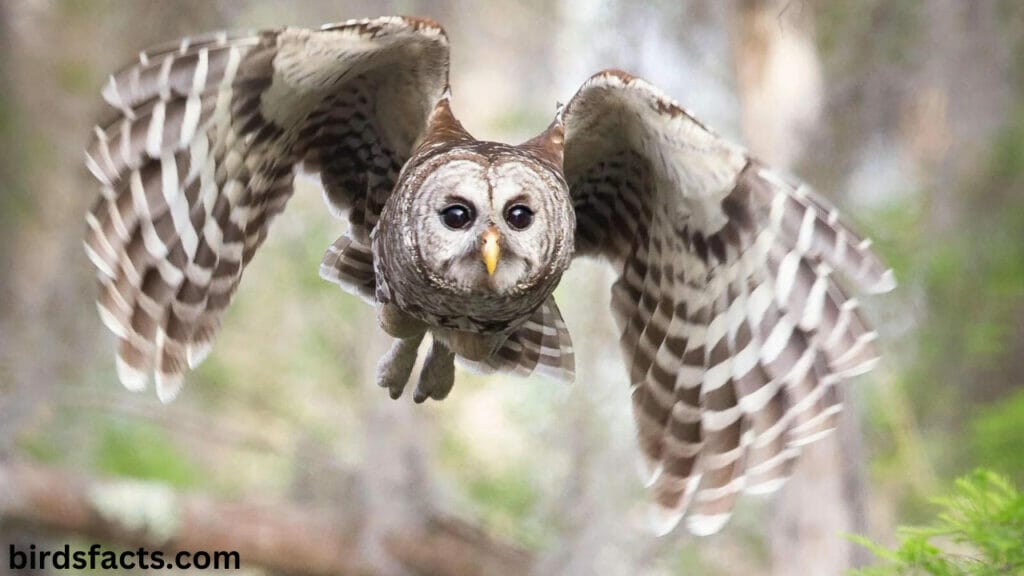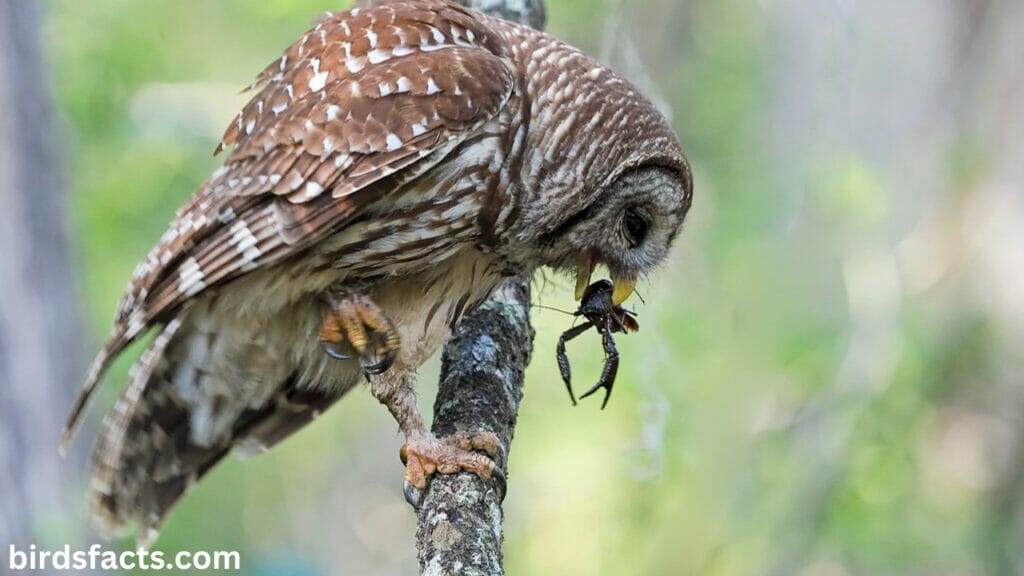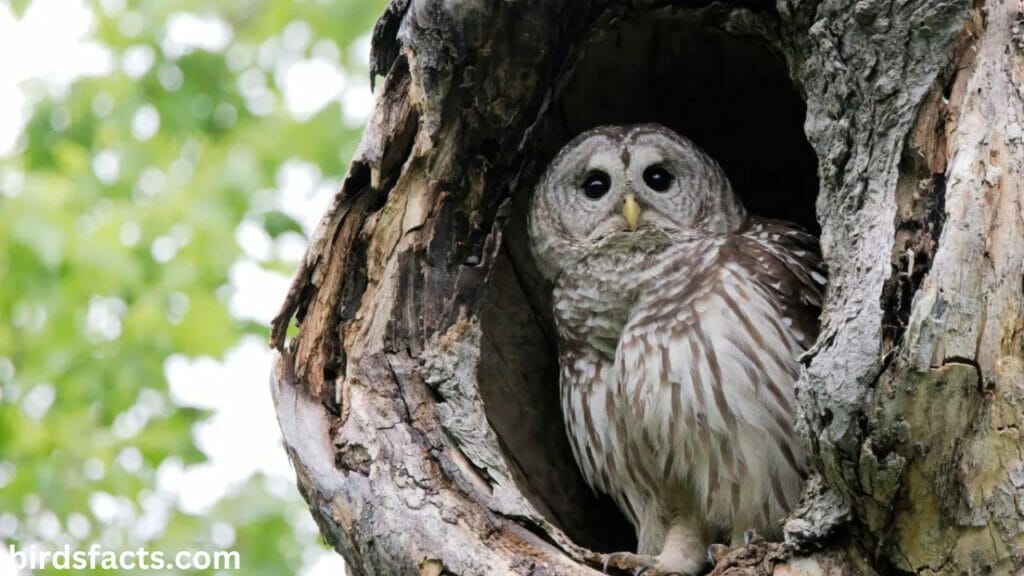
barred owl mating call
Barred Owl Call introduction
Listen closely, and you might hear a sound that is both eerie and beautiful – the call of the Barred Owl. Found in wooded areas throughout the United States, this nocturnal bird is one of the most distinctive species in North America. With its unique hooting call and gorgeous brown and white feathers, the Barred Owl is a sight to behold. Learn more about this remarkable bird and its oft-heard call in this insightful blog post!
Barred owl call sounds
Owl Hooting
Barred owl at night

mating call of barred owl
As night falls and the moon rises, the haunting sound of the barred owl’s call echoes through the darkness. It’s a sound that has been described as unearthly and mysterious, yet strangely comforting. The barred owl (Strix varia) is a medium-sized owl found throughout much of North America. It has unique vocalization has made it a favorite of many birders and nature lovers. The barred owl’s call is often described as “who cooks for you, who cooks for you all.”
The barred owl is a nocturnal hunter, so it is not surprising that its call is often heard at night. It is also an especially vocal bird, so you can often hear its call throughout the night. It may also be heard during the day, especially if you live near a wooded area. The barred owl’s call is one of the most distinctive owl calls. It may start with a few hoots, followed by a long, drawn-out “who-cooks-for-you-all.” The call is usually repeated several times in succession.
It can also sound like a series of high-pitched shrieks and yelps. Listening to the barred owl’s call at night can be a mesmerizing and calming experience. You may also hear other owls calling in the night, such as the Great Horned Owl, the Barn Owl, and the Eastern Screech Owl. The barred owl is an essential part of our environment, helping to keep rodent populations in check.
They also provide us with a beautiful and unique night-time soundscape. So, next time you hear the barred owl’s call at night, take a moment to enjoy the beauty and mystery of the night.
Barred owl Feeding Behavior

barred owl call audio
The barred owl, one of the most common species of owls in North America, is renowned for its distinctive call, which consists of a series of 8-10 hoots in a descending pattern. In some areas, this call can be heard at night and even during the day. But many people need to learn that this call isn’t just used to communicate with other barred owls or attract potential mates. It’s also used to mark their territory and warn other owls to stay away from it.
But, of course, the barred owl’s call isn’t the only thing that makes it stand out from other owls. This species is also known for its unique feeding behavior. Unlike most owls, which hunt during the night, the barred owl does most of its hunting during the day. This species typically hunts by swooping down from a perch and quickly snatching up its prey before it can react. And since it hunts during the day, the barred owl often has to compete with other daytime predators such as hawks and falcons.
But, while the barred owl is a skilled hunter, it’s also an opportunistic feeder. This species will also take advantage of any food sources that are easily accessible, such as rodents, insects, and even fruits and berries. And not only that, but the barred owl will also scavenge, which means it will feed on already-dead animals that it finds.
All in all, the barred owl is an incredible species in terms of its unique call and interesting feeding behavior. Thanks to its ability to hunt during the day and its opportunistic scavenging habits, this species has survived and thrived in many habitats across North America. So, if you ever hear the distinctive call of a barred owl, be sure to give it some extra appreciation for its unique behavior.
Barred owl Nesting

barred owl call loud
When it comes to nesting, barred owls are particular. They usually choose a large, sturdy tree with well-defined cavities, about 20 to 40 feet above the ground. The tree should have a broad base and sturdy branches that provide enough space for the owls to move around. In addition, the nest needs to be well hidden and have a wide range of views.
Barred owls lay an average of four to five eggs per clutch. The female incubates the eggs for 28 to 33 days while the male provides her with food. After the eggs hatch, the young owls stay in the nest for approximately six weeks while they learn to fly and hunt. During this time, the parents will regurgitate food for the young owls. Once the young owls are ready, they leave the nest to fend for themselves.
Barred owls are very loyal to their nesting sites and can often be seen returning to the same nesting site for multiple years. Because of this, it is essential to protect their nesting sites from potential threats, such as human activity and deforestation. If you live near a barred owl nesting site, keeping a respectful distance and avoiding disturbing the owls is essential.
Barred owls are a beautiful and fascinating bird species, and protecting their nesting sites from potential threats is essential. By doing so, we can ensure the survival of this species for future generations.
Conclusion
The barred owl is a fascinating bird that is both beautiful and mysterious. Its unique coloration and call make it easily recognizable and it is a beloved bird for many birdwatchers. Its range is quite broad, allowing people across North America to enjoy this interesting species. With the recent conservation efforts, the barred owl population is slowly being preserved and its numbers are increasing. It is important to continue these efforts to ensure this species is able to thrive.
Further Reading
You may also check out:
- fish with big forehead
- two birds on a wire lyrics
- why do birds suddenly appear
- three little birds sat on my window
- ipwnder v1.1
- japanese birds
- blue bird michigan
- birds behind glasses
- unlock tool crack
Thank you for reading!








